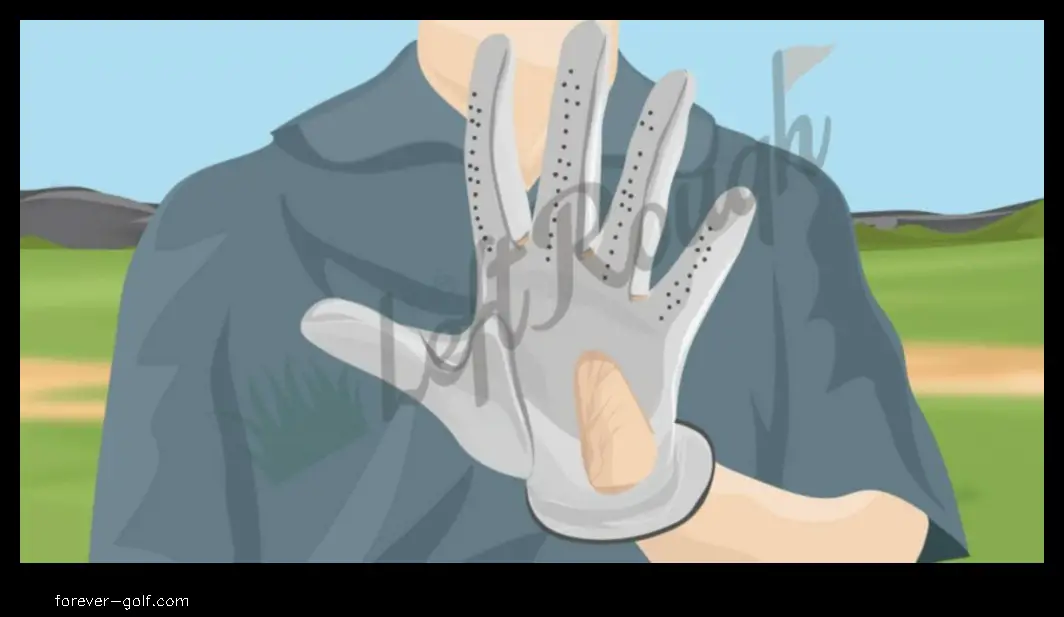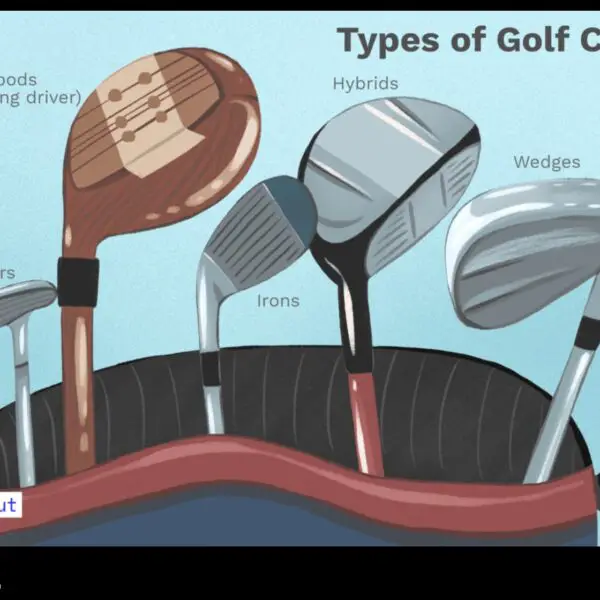
</p>
Golf Blisters on Non-Glove Hand
Golf blisters on the non-glove hand are a common problem for golfers. The repetitive motion of swinging a golf club can cause friction and rubbing on the skin, which can lead to blisters.
There are a number of things you can do to prevent or treat golf blisters on your non-glove hand. Here are a few tips:
- Wear a golf glove on your non-glove hand. This will help to protect your skin from friction and rubbing.
- Apply a thin layer of anti-chafing cream to your non-glove hand before you start playing golf. This will help to create a barrier between your skin and the golf club, and will help to prevent blisters.
- Take breaks during your round of golf to allow your hands to rest.
- After your round of golf, wash your hands with soap and water and apply a moisturizer to help soothe your skin.
If you do develop a blister on your non-glove hand, there are a few things you can do to treat it. Here are a few tips:
- Clean the blister with soap and water.
- Apply a thin layer of antibiotic ointment to the blister.
- Cover the blister with a bandage to protect it from further irritation.
- If the blister is large or painful, you may want to see a doctor.
By following these tips, you can help to prevent and treat golf blisters on your non-glove hand.
>
| Topic | Feature |
|---|---|
| Golf blisters | How to prevent or treat golf blisters on the non-glove hand |
| Golf glove | How to choose the right golf gloves |
| Hand blisters | How to treat hand blisters |
| Golf swing | How to prevent golf blisters from your golf swing |
| Blister prevention | Tips for preventing blisters |

II. What is a “response format”?
A response format is the way in which data is returned from a server to a client. The most common response format is JSON, but there are also other formats such as XML, HTML, and CSV.
III. Why is a “response format” unexpected?
There are a few reasons why a “response format” might be unexpected.
- The client might not have specified the expected response format.
- The server might not be able to generate the response format that the client requested.
- The response format might change unexpectedly.
In each of these cases, the client might not be able to handle the unexpected response format. This can lead to errors, data loss, or other problems.
It is important for both clients and servers to be aware of the potential for unexpected response formats. Clients should always specify the expected response format, and servers should be prepared to handle unexpected requests.

IV. What are the different types of response formats?
There are a variety of different response formats that can be returned by a web service. Some of the most common include:
- JSON (JavaScript Object Notation)
- XML (Extensible Markup Language)
- HTML (Hypertext Markup Language)
- CSV (Comma-separated values)
- TSV (Tab-separated values)
Each of these formats has its own advantages and disadvantages. JSON is a lightweight format that is easy to parse, but it can be less human-readable than XML or HTML. XML is a more verbose format that is more human-readable, but it can be more difficult to parse than JSON. HTML is a format that is designed for displaying data on the web, but it can be difficult to use for other purposes. CSV and TSV are both formats that are designed for storing data in tabular format, and they are both relatively easy to parse.
The best response format to use for a particular web service will depend on the specific needs of the application that is consuming the service.
V. How can you handle unexpected response formats?
There are a few things you can do to handle unexpected response formats.
- Use a
try/catchblock to catch any exceptions that are thrown when you try to parse the response. - Use a
switchstatement to handle different response formats. - Use a
JSON parserto parse the response into a JSON object. - Use a
XML parserto parse the response into an XML document.
It is important to handle unexpected response formats gracefully, so that your application does not crash or produce unexpected results.
Golf blisters on non glove hand
Golf blisters on the non-glove hand is a common problem for golfers. The search intent of this keyword is to find information on how to prevent or treat golf blisters on the non-glove hand. This could include information on how to choose the right golf gloves, how to properly wear golf gloves, and how to treat golf blisters if they do occur.
VII. What are the common mistakes to avoid when handling unexpected response formats?
When handling unexpected response formats, there are a few common mistakes that you should avoid. These include:
-
Assuming that all responses will be in the same format. This is a common mistake that can lead to problems if a response is received in a different format than expected. It is important to always check the format of a response before processing it.
-
Not validating the response data. Even if a response is in the expected format, it is important to validate the data before processing it. This can help to ensure that the data is accurate and complete.
-
Not handling errors correctly. If an error occurs while handling a response, it is important to handle it correctly. This may involve logging the error, notifying the user, or taking other appropriate steps.
By avoiding these common mistakes, you can help to ensure that your application can handle unexpected response formats properly.
No VIII.
The potential risks of not handling unexpected response formats properly can include:
- Loss of data
- Corrupted data
- System crashes
- Security breaches
- Financial losses
IX. Conclusion
In this paper, we have discussed the problem of unexpected response formats. We have defined what an unexpected response format is, why it is a problem, and how it can be handled. We have also provided best practices for handling unexpected response formats and discussed the potential risks of not handling them properly.
We hope that this paper has been helpful in understanding the problem of unexpected response formats and in developing strategies for handling them.
Introduction
What is a “response format”?
A response format is the way in which data is returned from a web service.
Why is a “response format” unexpected?
A response format can be unexpected for a number of reasons. For example, the response format may be different from what was specified in the request, or the response format may be invalid or malformed.
What are the different types of response formats?
There are a number of different response formats that can be used by web services. Some of the most common response formats include:
- JSON
- XML
- HTML
- CSV
How can you handle unexpected response formats?
There are a number of ways to handle unexpected response formats. Some of the most common methods include:
- Using a library or framework that can handle multiple response formats
- Implementing your own custom code to handle unexpected response formats
- Using a proxy service to convert unexpected response formats into a format that you can handle
What are the best practices for handling unexpected response formats?
The best practices for handling unexpected response formats include:
- Use a library or framework that can handle multiple response formats
- Implement your own custom code to handle unexpected response formats
- Test your code with unexpected response formats
- Document your code so that other developers know how to handle unexpected response formats
What are the common mistakes to avoid when handling unexpected response formats?
The common mistakes to avoid when handling unexpected response formats include:
- Not using a library or framework that can handle multiple response formats
- Not implementing your own custom code to handle unexpected response formats
- Not testing your code with unexpected response formats
- Not documenting your code so that other developers know how to handle unexpected response formats
What are the potential risks of not handling unexpected response formats properly?
The potential risks of not handling unexpected response formats properly include:
- Your application may crash or fail to work correctly
- Your application may be vulnerable to security attacks
- Your application may not be able to communicate with other applications
Conclusion
Handling unexpected response formats is an important part of developing robust and reliable web applications. By following the best practices outlined in this document, you can help to ensure that your application is able to handle unexpected response formats gracefully and without incident.
FAQ
Question 1
How can I prevent golf blisters on my non-glove hand?
Answer 1
There are a number of things you can do to prevent golf blisters on your non-glove hand. Some of the most effective methods include:
- Wear a golf glove on your non-dominant hand.
- Apply a golf grip aid to your non-dominant hand.
- Use a golf towel or hand towel to dry your hands frequently during your round.
- Apply a moisturizer to your hands before and after your round.
Question 2
How can I treat golf blisters on my non-glove hand?
Answer 2
If you do get a golf blister on your non-dominant hand, there are a few things you can do to treat it. Some of the most effective methods include:
- Clean the blister with warm water and soap.
- Apply an antibiotic ointment to the blister.
-
Latest posts by Owen Wilson (see all)
- Where Was the First Topgolf in the English Language - April 5, 2024
- Topgolf Back Net Distance How Far Is It - April 5, 2024
- Top Golf Where to Find the Best Golf Experiences Outside of the U.S. - April 5, 2024








